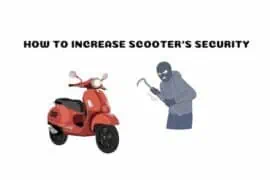Anti-lock brakes (ABS) prevent a motorcycle from locking its wheels during a firm or quick stop. This feature increases stability and balance while achieving more control over the slowing process.
Instead of locking the tires, ABS on motorcycles creates pulsing action to deploy and disengage rapidly. This technology “pumps the brakes” faster than what a rider can perform manually, reducing the distance it takes to achieve appropriate stopping power.
Didn't You Try Our Quote Comparison Tool Yet? Save BIG by Doing it!
Speed sensors are equipped on both wheels to determine the motorcycle’s speed at the time of the feature’s deployment. It senses when locking is about to happen, automatically deploying the safety feature to have more road control.
Table of Content
Does ABS Take Control Away from the Motorcyclist?
Anti-lock brakes operate when the sensors detect that a wheel is about to lock because of the motorcyclist’s braking command. Under normal riding conditions, most people don’t notice the difference between this safety feature and stop without it.
When a hard stop is necessary, a motorcyclist may feel pulsing sensations in the brakes and throughout the bike. That indicates the ABS is enhancing the braking power in that specific situation.
Is ABS Available on All Motorcycles?
This safety feature is required on all motorcycles in Europe, Japan, and Australia. Although there is a push to do the same in the United States, American riders can still select from different models that offer it as an optional feature.
The cost difference for a new motorcycle with ABS compared to one without it is typically $1,000 or less.
How Is ABS Different on a Motorcycle?
Most motorcycles offer front and rear brake controls. This design helps to balance the braking force when applied, ensuring the optimal stopping power for each situation.
When a wheel locks for a motorcycle, it can result in balance loss that causes the rider to lose their seat.
Can I Install Aftermarket ABS on a Motorcycle?
The best option is to purchase an anti-lock braking system that gets fitted during the factory manufacturing process. Although aftermarket options are available, fitment issues could reduce their effectiveness.
The cost to add a custom ABS option to an older motorcycle is often $4,000 or more.
Do I Need More Training to Ride a Bike with ABS?
Motorcycles equipped with anti-lock brakes operate the same as one without this feature under regular riding conditions.
There is an advantage for riders when they understand how to operate ABS during an emergency stop, so it often helps to complete a training course or to practice using it before taking the bike on the road.
The training requirements for each state have similarities, but there are specific differences to consider when obtaining your motorcycle license or endorsement.
Will ABS Save Me Money?
Anti-lock brakes are more expensive than a standard motorcycle when it is an optional feature. As ABS becomes standardized, there won’t be cost differences to manage. Since it is a safety feature, your monthly insurance premium could be lower with it equipped to your bike.
ABS creates an intuitive way to enhance braking when you need immediate stopping power. Request an insurance quote if you’ve updated your bike or are purchasing a new one to see how this safety feature could reduce your annual premiums.
Use This Tool for Free and Save on Quotes!





